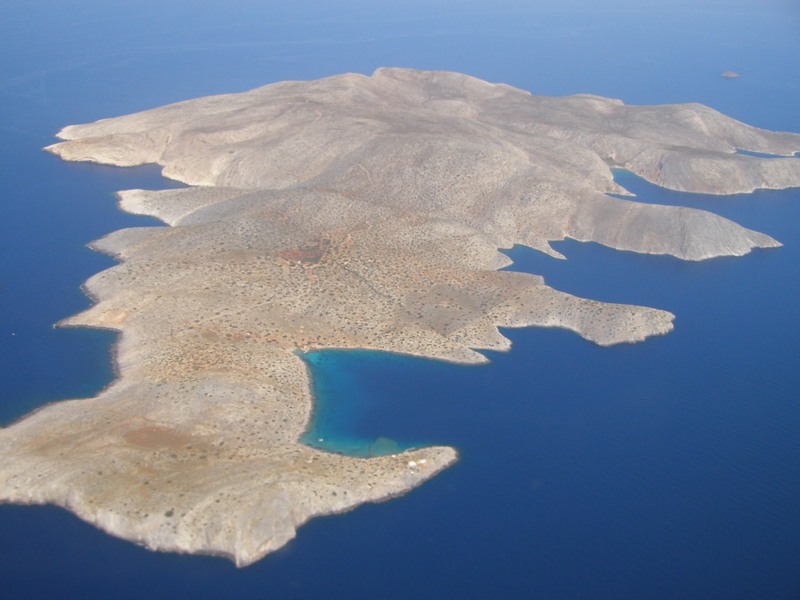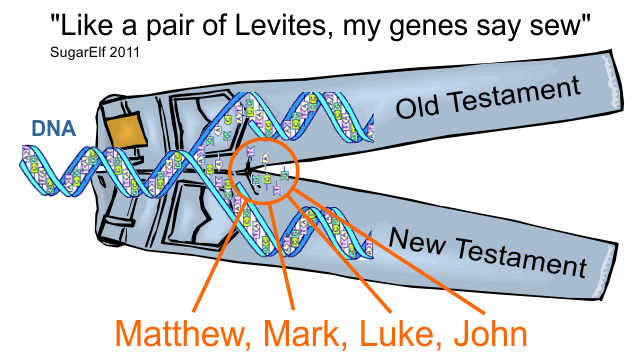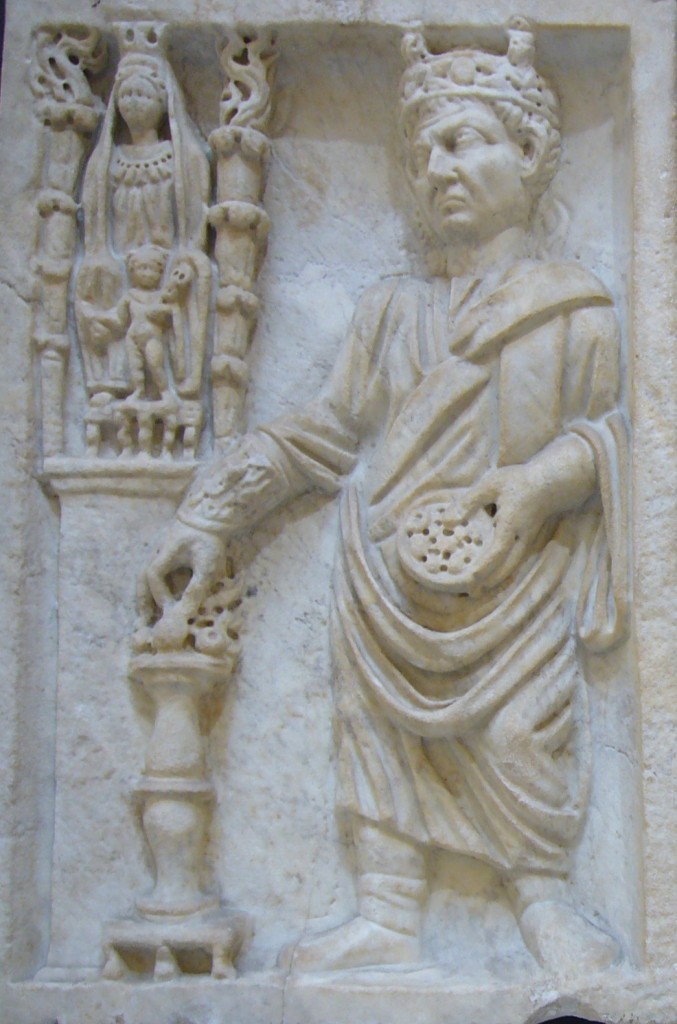The word Kohen, or Cohen (Kohain; Hebrew: כֹּהֵן, “priest”, pl. כֹּהֲנִים Kohanim or the English Koan) is the name of a priesthood that is one of the oldest still alive today. They are the ancient priests who had worshiped the God Asclepius; the God of wisdom, medicine, healing, rejuvenation and physicians, with his serpent-entwined Tau staff. The Kohens (Koans) of the House of Asklepios (iEsculapius) come from the Island of Kos just 7 miles off the coast of Crete, where the secret mysteries of their religion is not only passed from father to son, it is also contained in their blood.
A person who comes from the island Kos (Coos) is called a Koan in English, and a Cohen or Kohen (or Kohain; Hebrew: כֹּהֵן, “priest”, pl. כֹּהֲנִים Kohanim) which is simply the Hebrew word for priest. Hence, your last name does not have to be “Kohen or Cohen” to be a member of this biblical family. This is a common misconception that many modern Jews have today. The people and families of the original Kohens (Koans) were simply from the island of Kos located just 7 miles offshore Crete, and that were specifically trained in medicine, healing and arts. Hence, this is why the family of the Kohen were consecrated to serve in the Sanctuary of the Temple as the High Priests of Ancient Israel up to the destruction of the Second Temple in 70 CE. We also find that the Apostle Paul had visited this island of Kos (Coos) as described in Acts 21: “And it came to pass, that after we were gotten from them, and had launched, we came with a straight course unto Coos, and the day following unto Rhodes, and from thence unto Patara.”
 This small island of Kos has a deep history, that many people are simply unaware of. The people of Kos are mentioned in the time of Alexander the Great where they are also referred to as some of the most powerful Jewish bankers of their time, with strong connections to Egypt, the Ptolemies, Cleopatra and Herod; as described in early 20th century in The Jewish Encyclopedia:
This small island of Kos has a deep history, that many people are simply unaware of. The people of Kos are mentioned in the time of Alexander the Great where they are also referred to as some of the most powerful Jewish bankers of their time, with strong connections to Egypt, the Ptolemies, Cleopatra and Herod; as described in early 20th century in The Jewish Encyclopedia:
Jews are mentioned among the population of Kos; and under Alexander the Great and the Egyptian Ptolemies (from 836 13.6.) the town developed into one of the great Jewish centers in the A’Jgean. Josephus (“ Ant.” xiv. 7, § 2) quotes Strabo to the effect that Mithridates were sent to Kos to fetch the gold deposited there by Queen Cleopatra and “800 talents belonging to the Jews.”
Jews of Kos are mentioned at the time of Antiochus VII., Sidetes, Kos being one of the islands to which the rescript of the Roman consul Lucius was sent (139 12.0.; I Mace. xv. 23). It appears probable that in course of time the Jews became the chief bankers in the island, and that they took charge, at a certain rate of interest, of the large sums of money owned by the temples. In the sacrificial tablet of the Temple of Adrasteia and N emesis, they are mentioned (lines 17, 18) as mivrrg‘ ierb ‘r[uv rpa]1rsCur£w 6 67.2.1»; (Herzog, “Critische Forschungen,” p. 35). This inscription is of the first century 11c. Rayet (“ Mémoire sur l’Ile de Kos,” p. 80) thinks that the 800 talents ($960,000) deposited by Cleopatra were held by these Jewish rpamfirat; but of this there is no evidence (Paton and Hicks, “Inscriptions of Cos,” p. xxxviii.). In 49 3.0. the Koans are reminded by the consul Cains Fannius to obey the decree of the Roman Senate and to allow safe passage to Jewish pilgrims traveling to Jerusalem (Josephus, Le. xiv. 10, § 15). Herod is said to have provided an annual stipend for the benefit of prizewinners in the athletic games (Josephus, “B. J.” i. 21, § 11); a statue was erected there to his son Herod the ‘l‘etrarch (“ C. I. G.” 2502). The epigrammatist Melenger, who was living at Kos about 95 13.0., complains of having been abandoned by his mistress for a Jew (Epigram No. 83, in “Anthologia Graeea,” v. 160).
The island of Kos (Dia) is where the Father of Medicine, Hippocrates (Greek: Ἱπποκράτης; Hippokrátēs; c. 460 BC – c. 370 BC) was born, and also where he had operated his world-famous school of medicine. Soranus said that Hippocrates learned medicine from his father and grandfather, and studied other subjects with Democritus and Gorgias. (Wikipedia) This learning from grandfather to father, and father to son would follow in the ancient Kohen family tradition. Pliny had written; Hippocrates learned medicine by writing down the successful cures that had been recorded by patients on the walls of Asklepios’s Kohen (Koan) temple.
 The Ptolemies of the Greco Egyptian period had continued the ancient tradition of the high priests of Ptah from Egypt and were connected to the islands of Kos and Crete, which was part of the Ptolemaic Kingdom that had stretched from Egypt and spread along the Eastern Mediterranean from Cyprus, Crete, to almost all islands of the Aegean and even Thrace. Some members of the Ptolemy family were born on Kos, such as Ptolemy II in 308 B.c.e. In the time of Ptolemy Philadelphos, who was the son of Cleoptatra; Kos enjoyed great relations with the Alexandrian court, and is where some of the greatest literary men of the time from Alexandria would often want to escape the busy atmosphere of the city and travel to Kos for a spiritual and health retreat. Some of them would also attend the Hippocrates’ School of Medicine, which would have been the finest in all the world from the 5th century, down to the time of the destruction of the temple.
The Ptolemies of the Greco Egyptian period had continued the ancient tradition of the high priests of Ptah from Egypt and were connected to the islands of Kos and Crete, which was part of the Ptolemaic Kingdom that had stretched from Egypt and spread along the Eastern Mediterranean from Cyprus, Crete, to almost all islands of the Aegean and even Thrace. Some members of the Ptolemy family were born on Kos, such as Ptolemy II in 308 B.c.e. In the time of Ptolemy Philadelphos, who was the son of Cleoptatra; Kos enjoyed great relations with the Alexandrian court, and is where some of the greatest literary men of the time from Alexandria would often want to escape the busy atmosphere of the city and travel to Kos for a spiritual and health retreat. Some of them would also attend the Hippocrates’ School of Medicine, which would have been the finest in all the world from the 5th century, down to the time of the destruction of the temple.
Herodas (Greek: Ἡρώδας) was a Greek poet who was also a Kohen (Koan) from the island of Kos. An account of Kos, down to, and during the time of Herodas is given in the book, The Mimes of Herodas by Herodas;
Next to Rhodes, Kos is the largest of the Dorian Sporades. Its Geocircumference is given by Strabo as 550 stades, by Pliny the elder as 100 Roman miles. The island falls into three divisions (i)the eastern district, bounded on the south by a high range of mountains; upon these mountains are the healing springs, which are still famous; (2) a plateau furrowed by watercourses, and for the most part desolate and barren; (3) the mountainous western district, with a distinct range of its own.
Most of the island is remarkably fertile, and noted for its wines. Kos is badly supplied with harbours. Its people were of a sober, steadfast character, as befitted their Doric origin. The youths of Kos were famous for their beauty1. They adhered faithfully to ancient ritual, especially in regard to the worship of Asklepios, which came to them from the mainland of Greece*. In the fifth century the Koan school of medicine, which continued famous for a considerable period, was founded by Hippokrates; he based his observations on the votive models in the temple of Asklepios, which constituted a kind of anatomical and pathological museum.
The history of the settlements on the island is as follows. In the Early Homeric catalogue we find Kos, with its dependent islands (Nisyros, J^yj? Krapathos, Kasos, and the Kalydnian group), sending a contingent island, of thirty ships to help the Greek cause. The contingent is led by Pheidippos and Antiphos, the sons of Thessalos, a Herakleid. In the Iliad we also hear twice6 of Herakles having been carried to Kos by contrary winds through the anger of Hera, on his way from the sack of Troy. He is attacked by the natives of Kos, according to the fuller form of the legend, and slays the king of the island, Eurypylos, marries his daughter Chalkiope, and begets a son, Thessalos. This legend is now seen to be referred to by Herodas *.
Thus, even before the Dorian migration and the colonization of Ionia there was a Dorian settlement in Kos. It is thought probable that these Dorians came from Argolis. Herodotos1 tells us that Kos and the adjacent islands were colonized from Epidauros, and in this way the old Dorian element was strengthened. The sterner features of the Dorian character were, however, mollified in Kos. The discipline (dyaryi;) of Sparta and Crete is not found there, though the population of the island was purely Dorian, and was divided into the three Dorian tribes, the Dymanes, Hylleis, and Pamphyli. Six of the cities in this region formed a religious league, the Doric Hexapolis. They were, besides Kos, Lindos, Ialysos, Kamiros, Knidos, and Halikarnassos. These states met at the temple of Apollo on the Triopian promontory, to take part in the worship of the god and also in games. Later on Halikarnassos was expelled, and the Hexapolis became a Pentapolis.
The dwellings of the earliest inhabitants of Kos were on the northeast coast, near the present town of Kos. The fountain Burinna*, which is alluded to by Theokritos *, and still remains, is situated in this region. The Dorian settlers saw the advantage of this side of the island, which brought them closer to the mainland; they did not, however, confine themselves to the east coast, but spread over the island Koto. In the sixth century the Lydo-Persian wars forced them to change the capital of the island to the opposite side, where they built ‘Acmm-dXaia, which served as the capital until the fourth century.
It was on Crete and Kos where the royal family of the Ptolemies had intermarried with various princesses of the ancient priesthood blood of the island, that which played a prominent role in the building of the Ptolemaic court that was a powerful religious and banking dynasty. Author, Theodore Arthur Buenger explains more of this connection between Crete and Egypt in his book, “Crete in Greek Tradition.” He relates the story of the Egyptian God Ammon fleeing to Crete that was originally told by the 1st Century B.C. Greek historian, Diodorus Siculus who was also from the same Holy Island of Crete, or quite possibly a Kohen from Kos;
An odd story is told by Diodorus about Rhea and Ammon. Rhea quarreled with the other Titans, went away from them, and married Ammon in Egypt. After a time she deserted him and married Cronus, who then waged war against the Egyptian god. Ammon, fleeing from Cronus, went to Crete and married Crete, the daughter of one of the Curetes. If this story really represents an old tradition, it must be rated rather high, for it is practically the only one which links Crete and Egypt.
Hippocrates and Ptolemy II would have been of the priesthood of the original Kohen who trace their patrilineal descent from the Biblical Aaron. This is one of the methods, in which we can verify that there is a relationship in history between Crete, the Isle of Kos and Egypt, and that also ties in with the Kohen Priesthood.
This history above connects the Island of Kos to the ancient priesthood of the Kohens (Koans) and also home to one of the most powerful cities and people of their time. A people, priesthood, medicine men, bankers and kings who were also once aligned with the most powerful governments of Egypt and Athens. It was during the Peloponnesian War, when they were considered an ally of Athens, and later part of the Delian League. The island Kos or Cos is named after Ceus, the son of Titan, and has been known by various names such as Zia, Cia, Cea, Ceos, Coo, Coos, Cous, Delos, Merope, Lemnos, Letos, Staunchio and Patmos.
Today the island of Kos is simply known as Dia. A barren wasteland, that was once the fertile home to the Kohens (Koans) and one of the world’s best schools of medicine. A history and true origins of a people, that someone or some entity had wished to erase from the memories of their ancestors, their original home, and from the face of the earth.
SOURCES:
1. Creation Records Discovered in Egypt: (studies in The Book of the Dead) By George St. Clair page 72
2. All other sources are linked to in yellow or can be easily researched via Google and Open Source material

Moe is the founder of GnosticWarrior.com. He is a father, husband, author, martial arts black belt, and an expert in Gnosticism, the occult, and esotericism.









Fantastic info gathering again!
The caduceus is much used like a symbolic representation of commerce, postal service, and ambassadorial positions and since the 16th cent. has largely replaced the one-snake symbolic representation of Asclepius as being a image of medicine.
I notice that you do not make a point of Christianity destroying this God and his religion with the new man on the cross to replace the snake. I have seen so much of the brilliant genius behind the assimilation of other religions into Chritianity I can’t help but wonder if this was yet another assimalation invention.
Thanks so much for the kind words Jimmy. The caduceus used today is based on the God of Profit , AKA Hermes, as opposed to the God of Healing, Asklepios or Asclepius. The key here is the God isn’t even Jesus, but Mary or Venus. She sits on the throne rite now. Hence, we live in a matriarchal society ruled by the Goddess of the earth who is also the Goddess of Death. This is why the Christian cross is the symbol of death and not salvation.